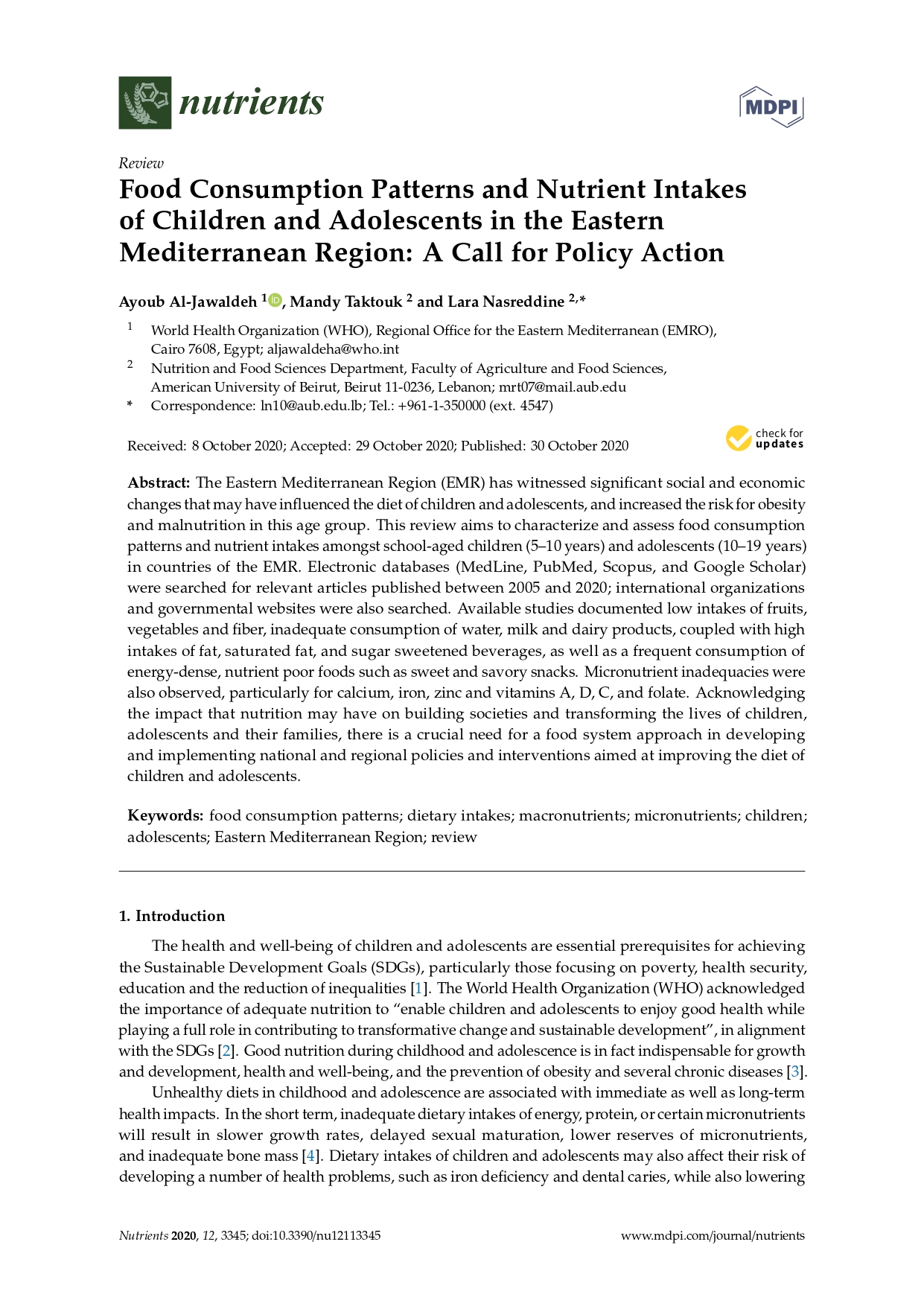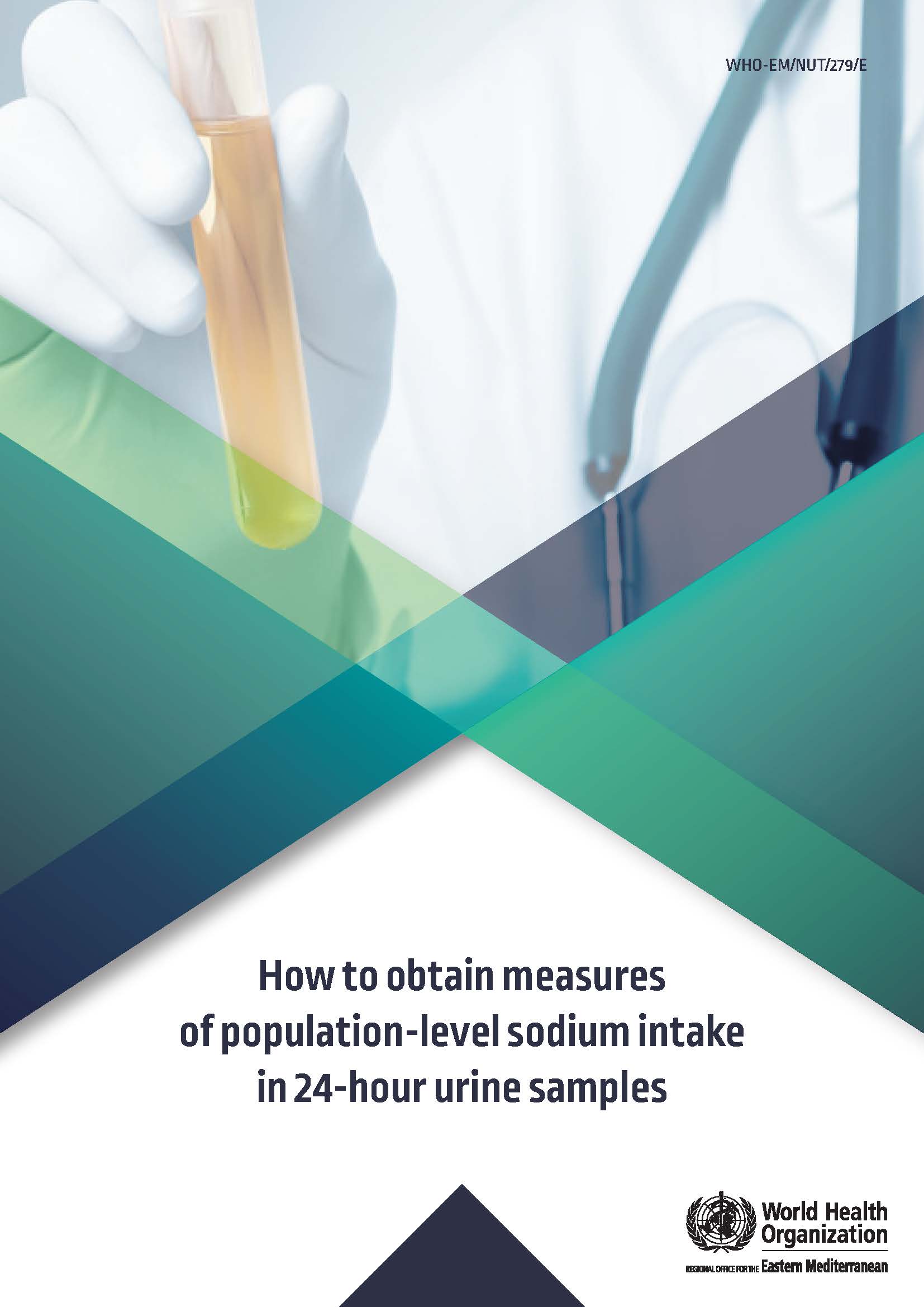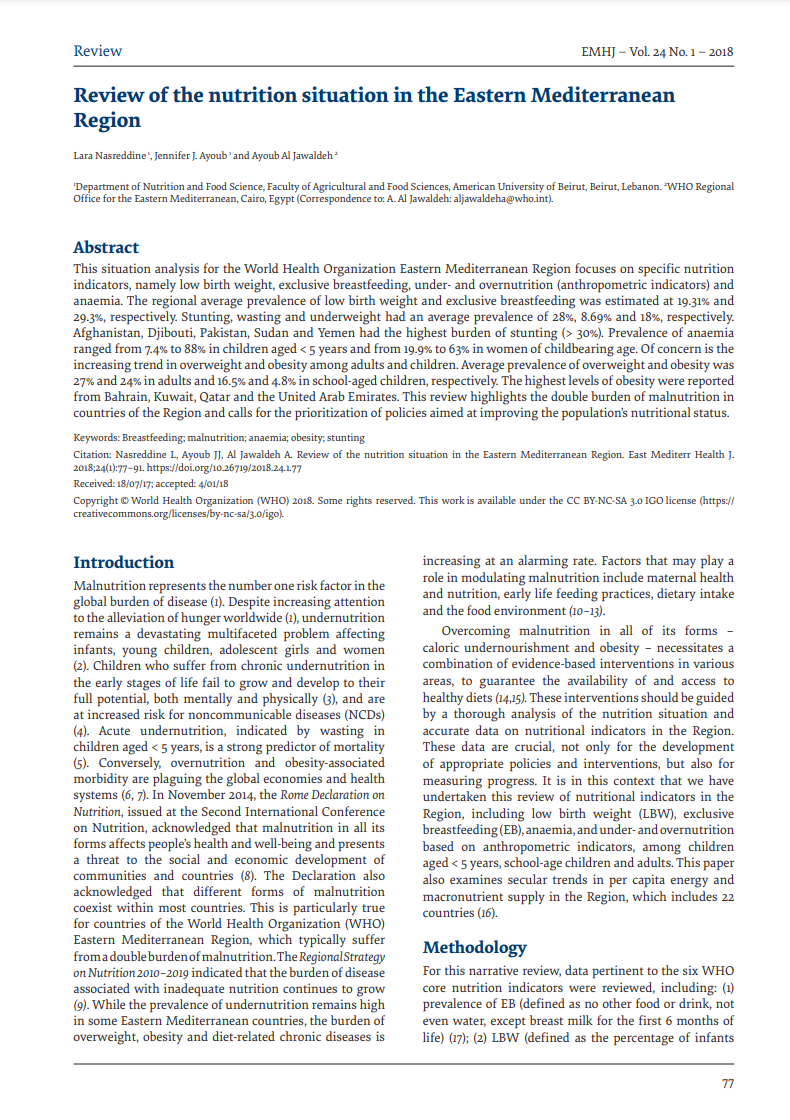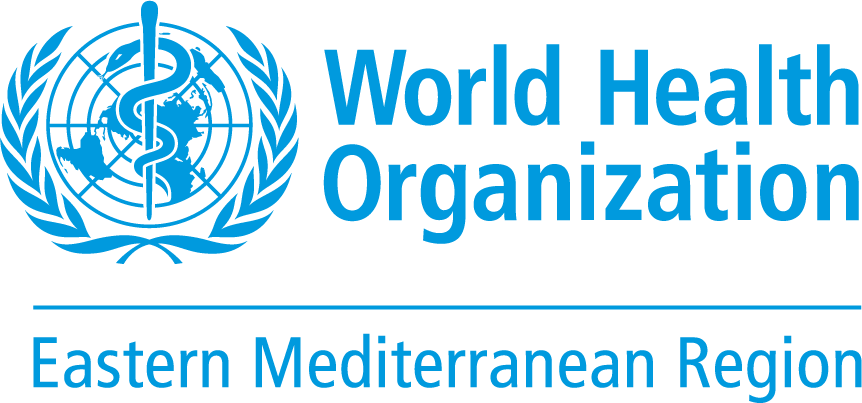
Qualitative Review of National Nutrition Surveillance Systems in the Eastern Mediterranean Region
Publication date: 2020
Many countries, especially in the EMRO region, continue to encounter substantial difficulties in regularly generating disaggregated data on nutrition. The study aimed to review the existing nutrition surveillance systems in the region and to identify their strengths and weaknesses, as well as the challenges they face in functioning optimally. In conclusions, nutrition surveillance systems that utilize existing health information systems are the most sustained in the EMRO region. However, by integrating data from multiple sources, such as health facilities, surveys, and population censuses, countries can provide a holistic view of the nutritional situation, and enhance their response to any emergency.

Food consumption patterns among children and adolescents and their correlation with overweight/obesity in Egypt: a cross-sectional study
Publication date: 2020
Overweight and obesity have become epidemic diseases in Egypt. This study aims to evaluate the prevalence of overweight/obesity among Egyptian children and adolescents in correlation to food consumption patterns and other risk factors. The study recommends that prompt action needs to be taken to prohibit unhealthy food items including carbonated soft drinks, crackers, juices and chocolates in schools as well as to advocate for increasing taxes on them.
Nutritional value of the Middle Eastern diet: analysis of total sugar, salt and iron in Lebanese traditional dishes
Publication date: 2020
The expanding burden of diet-related noncommunicable diseases in the Eastern Mediterranean requires urgent public health vigilance and actions. This study aimed at establishing a database analysis of total sugar, salt and iron content in Lebanese foods, focusing on traditional dishes. This study emphasizes the need for multi-cultural education and awareness on food sources of salt and iron, and the health effects regarding high intake of salt and low intake of iron.

Food consumption patterns and nutrient intakes of children and adolescents in the Eastern Mediterranean Region: a call for policy action
Publication date: 2020
The Eastern Mediterranean Region has witnessed significant social and economic changes that may have influenced the diet of children and adolescents, and increased the risk for obesity and malnutrition in this age group. This review aims to characterize and assess food consumption patterns and nutrient intakes amongst school-aged children (5–10 years) and adolescents (10–19 years) in countries of the Region. Acknowledging the impact that nutrition may have on building societies and transforming the lives of children, adolescents and their families, there is a crucial need for a food system approach in developing and implementing national and regional policies and interventions aimed at improving the diet of children and adolescents.

How to obtain measures of population-level sodium intake in 24-hour urine samples
Publication date: 2018
There is compelling evidence of the direct relationship between salt consumption and blood pressure. WHO is coordinating initiatives globally to reduce dietary salt intake at the population level. This document provides an essential salt intake measurement tool for countries in the Eastern Mediterranean Region that want to start, contribute to, and share information on dietary salt reduction initiatives. The protocol is primarily intended for principle investigator(s) of studies of salt/sodium, potassium and iodine intake. Parts of the document are also intended for field staff who are conducting the surveys.

Review of the nutrition situation in the Eastern Mediterranean Region
Publication date: 2018
This s ituation analysis for the WHO Eastern Mediterranean Region focuses on specific nutrition indicators, namely low birth weight, exclusive breastfeeding, under- and overnutrition (anthropometric indicators) and anaemia. It provides regional average prevalence rates and highlights the distribution of the burden of malnutrition in the Region. This review highlights the double burden of malnutrition in countries of the Region and calls for the prioritization of policies aimed at improving the population’s nutritional status.

Food and nutrition surveillance systems: a guide for trainers
Publication date: 2014
This guide is a practical and comprehensive tool for facilitators to conduct training in food and nutrition surveillance systems. It contains a clear protocol for the training including training topics, schedule, exercises and supporting materials. The expected outcome of the training is participants’ increased capacity to plan and prepare for surveillance, conduct data collection, analyse the data collected and report and disseminate the results. It is intended for use in conjunction with Food and nutrition surveillance systems: a manual for policy-makers and programme managers.

Food and nutrition surveillance systems: a manual for policy-makers and programme managers
Publication date: 2014
This manual is designed to be a user reference manual for policy-makers and programme managers for the development of a food and nutrition surveillance system, with the focus on application. It presents a model for developing a surveillance system and provides a general overview of the basic principles, as well as the essential steps and issues involved in the different activities to be undertaken. The content is organized in six modules, considering the concept and basic principles, background of malnutrition, indicators for food and nutrition surveillance systems, measuring of malnutrition, supervision, monitoring and evaluation, and data management and processing.

Food and nutrition surveillance systems: technical guide for the development of a food and nutrition surveillance system
Publication date: 2013
As food and nutrition policies and programmes require a strong evidence base, there is a need for a sustained food and nutrition surveillance systems in countries. The main objective of this document is to provide the technical background for the development of a national food and nutrition surveillance system. The document explains thoroughly the concept of food and nutrition system and describes the different types of indicators that can be used to measure the nutritional determinants or consequences of interventions and policies.

Field guide on rapid nutritional assessment in emergencies
Publication date: 1995
The WHO EMRO Consultation on Rapid Nutritional Emergencies was called to develop a set of guidelines for the rapid assessment of nutritional status needed in emergencies, with clear instructions for use in the field. Experts and WHO discussed and agreed on major problem areas in nutritional assessment such as choice of indicators, sampling requirements, methodology and analysis, use and users of the information. This field guide will guide the user through the entire process of designing, planning, implementing, and reporting reliable nutritional assessment. It will also be a useful companion for all those faced with disasters in the Eastern Mediterranean Region and outside.




